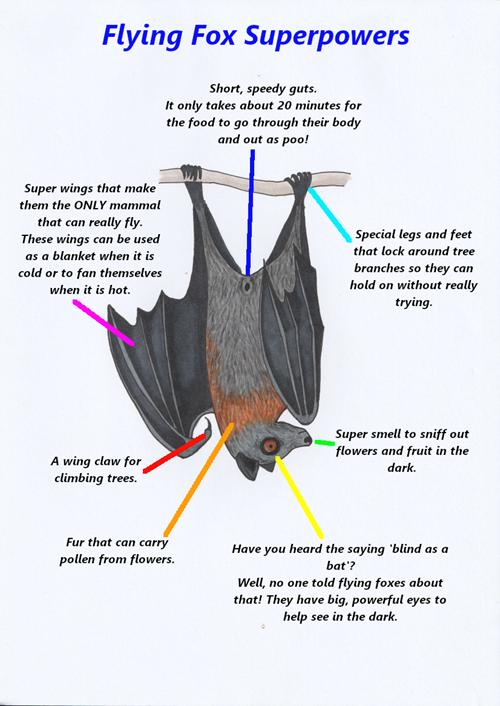 Credits: Laura Hill 2021
Credits: Laura Hill 2021
These superheroes
Flying foxes are also called fruit bats because a lot of their food is fruit. They are Australia’s biggest bat which is why they are called megabats (mega = big). Our really small bats are called microbats (micro = small).
Flying foxes are mammals, like us, meaning they give birth to live babies and feed them milk. By day they hang upside down in trees, but at night they become the superheroes of the forests. Let’s get to know these superheroes better and look at their superpowers.